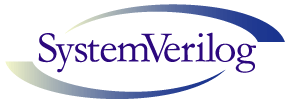In computer science, functional programming is a programming paradigm where programs are constructed by applying and composing functions. It is a declarative programming paradigm in which function definitions are trees of expressions that map values to other values, rather than a sequence of imperative statements which update the running state of the program.
Logic programming is a programming, database and knowledge representation paradigm based on formal logic. A logic program is a set of sentences in logical form, representing knowledge about some problem domain. Computation is performed by applying logical reasoning to that knowledge, to solve problems in the domain. Major logic programming language families include Prolog, Answer Set Programming (ASP) and Datalog. In all of these languages, rules are written in the form of clauses:
Prolog is a logic programming language that has its origins in artificial intelligence, automated theorem proving and computational linguistics.
Pascal is an imperative and procedural programming language, designed by Niklaus Wirth as a small, efficient language intended to encourage good programming practices using structured programming and data structuring. It is named after French mathematician, philosopher and physicist Blaise Pascal.
In computer programming, the scope of a name binding is the part of a program where the name binding is valid; that is, where the name can be used to refer to the entity. In other parts of the program, the name may refer to a different entity, or to nothing at all. Scope helps prevent name collisions by allowing the same name to refer to different objects – as long as the names have separate scopes. The scope of a name binding is also known as the visibility of an entity, particularly in older or more technical literature—this is in relation to the referenced entity, not the referencing name.
In programming languages, a closure, also lexical closure or function closure, is a technique for implementing lexically scoped name binding in a language with first-class functions. Operationally, a closure is a record storing a function together with an environment. The environment is a mapping associating each free variable of the function with the value or reference to which the name was bound when the closure was created. Unlike a plain function, a closure allows the function to access those captured variables through the closure's copies of their values or references, even when the function is invoked outside their scope.
A programming paradigm is a relatively high-level way to structure and conceptualize the implementation of a computer program. A programming language can be classified as supporting one or more paradigms.
In computer science, imperative programming is a programming paradigm of software that uses statements that change a program's state. In much the same way that the imperative mood in natural languages expresses commands, an imperative program consists of commands for the computer to perform. Imperative programming focuses on describing how a program operates step by step, rather than on high-level descriptions of its expected results.
In computer science, declarative programming is a programming paradigm—a style of building the structure and elements of computer programs—that expresses the logic of a computation without describing its control flow.
A method in object-oriented programming (OOP) is a procedure associated with an object, and generally also a message. An object consists of state data and behavior; these compose an interface, which specifies how the object may be used. A method is a behavior of an object parametrized by a user.
Oz is a multiparadigm programming language, developed in the Programming Systems Lab at Université catholique de Louvain, for programming language education. It has a canonical textbook: Concepts, Techniques, and Models of Computer Programming.
A stored procedure is a subroutine available to applications that access a relational database management system (RDBMS). Such procedures are stored in the database data dictionary.

SystemVerilog, standardized as IEEE 1800, is a hardware description and hardware verification language used to model, design, simulate, test and implement electronic systems. SystemVerilog is based on Verilog and some extensions, and since 2008, Verilog is now part of the same IEEE standard. It is commonly used in the semiconductor and electronic design industry as an evolution of Verilog.
The following outline is provided as an overview of and topical guide to computer programming:
This article attempts to set out the various similarities and differences between the various programming paradigms as a summary in both graphical and tabular format with links to the separate discussions concerning these similarities and differences in extant Wikipedia articles.

Object-oriented programming (OOP) is a programming paradigm based on the concept of objects, which can contain data and code: data in the form of fields, and code in the form of procedures. In OOP, computer programs are designed by making them out of objects that interact with one another.
In computer programming, a function, subprogram, procedure, method, routine or subroutine is a callable unit that has a well-defined behavior and can be invoked by other software units to exhibit that behavior.
In computer science, purely functional programming usually designates a programming paradigm—a style of building the structure and elements of computer programs—that treats all computation as the evaluation of mathematical functions.
This glossary of computer science is a list of definitions of terms and concepts used in computer science, its sub-disciplines, and related fields, including terms relevant to software, data science, and computer programming.

